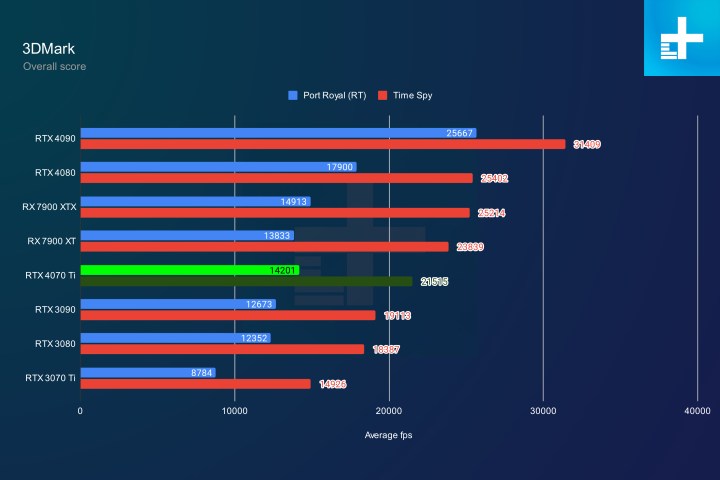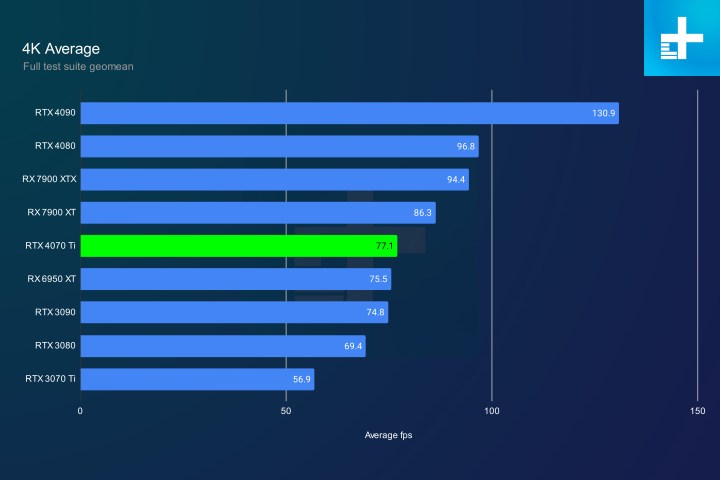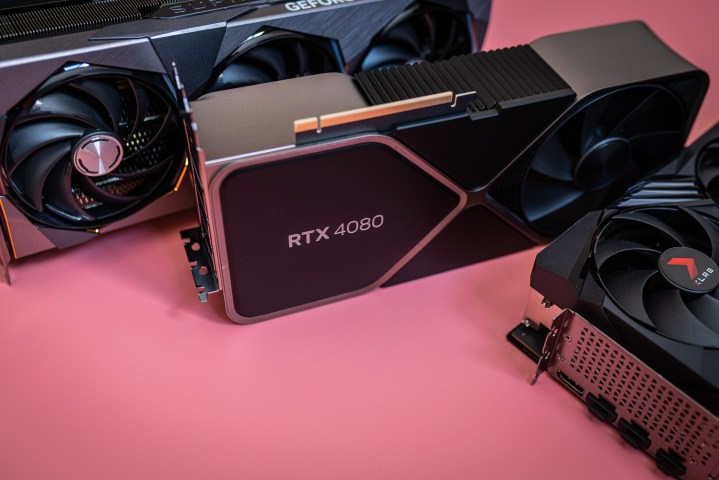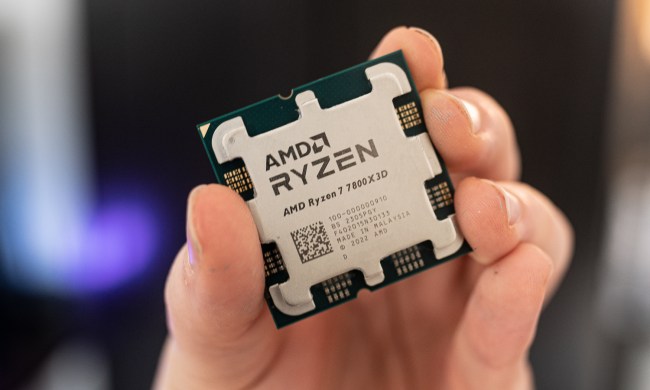Nvidia’s RTX 4080 has been out for a while, but the RTX 4070 Ti is a new release, and the circumstances around it are quite strange. At first, the GPU giant called this graphics card the “RTX 4080 12GB,” but it was a version with significantly worse specifications than its counterpart. After some backlash, Nvidia “unlaunched” it, only to release it again a while later — this time under the name of RTX 4070 Ti.
While the road it took to get here was unusual, the RTX 4070 Ti has now arrived, and we’ve tested both of these graphics cards ourselves. Let’s see how they stack up against each other.
Pricing and availability

As mentioned, the RTX 4080 and the RTX 4070 Ti (also known as the 12GB version of the RTX 4080) were initially announced on the same day and both were set to arrive on the same date: November 16, so a little later than the flagship RTX 4090. However, before that day ever came, Nvidia pulled the plug on the less powerful GPU, leaving the RTX 4080 to fend for itself on its release date.
While Nvidia didn’t say much as to what would happen to the card it decided to cancel, most industry sources knew that it would have to appear again at some point. The GPUs have already been made, and to scrap the entire project would have been costly.
It was only a matter of time before Nvidia announced the RTX 4070 Ti during its CES 2023 keynote. The card was then officially launched two days later on January 5.
The RTX 4080 was always priced at $1,200 and it retained that price tag upon arrival. Its less powerful sibling was initially priced at $900, which many people thought was much too high. Now, the RTX 4070 Ti comes with a list price of $800, but seeing as Nvidia isn’t making a Founders Edition version of the card, the reality is that the GPU might cost more than that, all depending on Nvidia’s partners, such as Asus or Gigabyte.
Specs
| Nvidia GeForce RTX 4080 | Nvidia GeForce RTX 4070 Ti | |
| Process node | TSMC 4nm | TSMC 4nm |
| CUDA cores | 9,728 | 7,680 |
| Ray tracing cores | 76 3rd-gen | 60 3rd-gen |
| Tensor cores | 304 4th-gen | 240 4th-gen |
| Base clock | 2,205MHz | 2,310MHz |
| Maximum clock | 2,505MHz | 2,610MHz |
| Memory size | 16GB GDDR6X | 12GB GDDR6X |
| Memory speed | 21Gbps | 21Gbps |
| Memory bus | 256-bit | 192-bit |
| TDP | 320 watts | 285 watts |
The RTX 4080 and the RTX 4070 Ti were both built on the same Ada Lovelace architecture, but as you can see, the specifications of the RTX 4070 Ti have been cut down rather significantly.
We’re getting 4GB less memory, 21% fewer CUDA cores, Tensor cores, and ray tracing cores. The 192-bit memory bus is also an issue for the RTX 4070 Ti, and as we’ve noted in our review of the card, the RTX 3070 Ti actually has around 40% more bandwidth because of this.
The CUDA core volume of the RTX 4070 Ti puts it between the RTX 3070 Ti and the RTX 3080. However, it sports more memory than the RTX 3070 Ti and also utilizes Nvidia’s latest tech such as DLSS 3 and Shader Execution Reordering (SER).
As far as power consumption goes, the cards both fall around a similar range, which is far behind the 450W RTX 4090. However, in reality, they rarely ever hit those numbers — Nvidia’s Ada Lovelace has turned out to be surprisingly power efficient.
Performance

To be able to settle the score between the RTX 4080 and the RTX 4070 Ti, we’ve run a number of benchmarks, including synthetic and gaming tests. In order to get a full glimpse at their performance, we’ve also compared them to some of the other best graphics cards on the current market.
Starting with synthetic benchmarks, right out the door we’re seeing that the true rival of the RTX 4070 Ti is not its Team Green sibling, but AMD’s RX 7900 XT. In these tests, the RTX 4070 Ti proved to be around 10% slower than the RX 7900 XT. The gap between the RTX 4080 and the RTX 4070 Ti is wider. In 3DMark Time Spy, the RTX 4070 Ti was about 15% slower.
In 3DMark’s Port Royal ray tracing test, another flaw of the RTX 4070 Ti is exposed — the GPU is not quite the ray tracing beast that you’d expect from a $900 Nvidia graphics card. It lags behind the RTX 4080 with a score around 20% lower.

Moving on to gaming scenarios, we tested the cards at 4K, 1440p, and 1080p. Nvidia markets the RTX 4070 Ti as a GPU for 1440p gaming, but at that price, it should be able to run some games at 4K — and it does. It was able to hit 77.1 frames per second (fps) on average, meaning stable gameplay at that resolution. Unfortunately, it’s also 20% slower than the RTX 4080, which makes that score rather unimpressive.
While the RTX 4090 and the RTX 4080 maintain their undisputed spots as the two victors in 4K gaming, the RTX 4070 Ti is left trailing behind in a rather precarious position. It’s outperformed by the two AMD RX 7900 XT/XTX cards, and even the last-gen RX 6950 XT is just a hair slower while being cheaper.

Things are better when we move on to 1440p. The RTX 4080 averaged 159.3 fps across our test suite, while the RTX 4070 Ti maintained a respectable 134.4 fps. This means around a 15% decrease in frame rates for the RTX 4070 Ti. However, its direct rival, the AMD RX 7900 XT, fared much better at 146.7 fps, which equals an increase of roughly 8 percent.
The margins over the previous generation of cards are also higher here, with the RTX 4070 Ti maintaining a stronger lead over the RTX 3090 and a 40% generational improvement over the RTX 3070 Ti.
At 1080p, both the cards do more than well, showing that you should be picking up one of the best 1080p GPUs instead — the 4080 and the 4070 Ti are simply overkill if 1080p gaming is all that you’re after. The RTX 4070 Ti averages 170.5 fps, and the RTX 4080 maintains a commanding lead with 191.7 fps. Both are miles ahead of their Ampere counterparts.

Nvidia is the undisputed king of ray tracing, but the RTX 4070 Ti doesn’t quite live up to that name. At 4K, it falls close to the AMD RX 7900 XTX, which is surprising because AMD normally doesn’t put up much of a fight where ray tracing is concerned. Compared to the RTX 4080, it only maintained 34.3 fps versus the 43.5 provided by its better sibling.
The ray tracing game certainly improves when we move on to 1440p. The RTX 4080 averages 84.3 fps, and while the RTX 4070 Ti only managed 68.6, it still maintains a small lead over every AMD GPU. It’s a smidge faster than the RTX 3090.
Will you choose budget or performance?

It’s a tough call between the RTX 4080 and the RTX 4070 Ti, because, in a way, we’re forced to pick the lesser of two evils. Don’t get me wrong — both of these graphics cards are solid, and they are certainly among the best that are out right now. It’s just that each comes with some downsides.
The RTX 4080 is often thought to be overpriced. Compared to the RTX 4090, which has a list price of $1,600, it’s simply a worse deal — so much so that its release actually boosted the sales of the RTX 4090. It’s a great card that offers DLSS 3 and access to both 4K and 1440p gaming on ultra settings, but it could stand to be cheaper in order to justify the fact that it’s simply a lot slower than the flagship RTX 4090.
The RTX 4070 Ti, on the other hand, is tricky because it can’t hope to compete with the RTX 4080. This is why Nvidia gave it a price cut, but the prices might be higher when the card hits the shelves. If it ends up near the price of the AMD Radeon RX 7900 XT ($900), the RTX 4070 Ti will be in an awkward position on the market, one where AMD’s card (which isn’t a great deal either — the RX 7900 XTX is better value) is actually the better option, provided you don’t mind missing out on DLSS 3 and ray tracing.
With all that said, if your heart is set on buying either the RTX 4080 or the RTX 4070 Ti, it’s all going to come down to your individual gaming needs and your budget. If you can stand to spend a little more, there are better options out there than the RTX 4070 Ti, and the RTX 4080 might be one of them — but if you want to stick to around $800, the RTX 4070 Ti is certainly a decent GPU for 1440p gaming.




